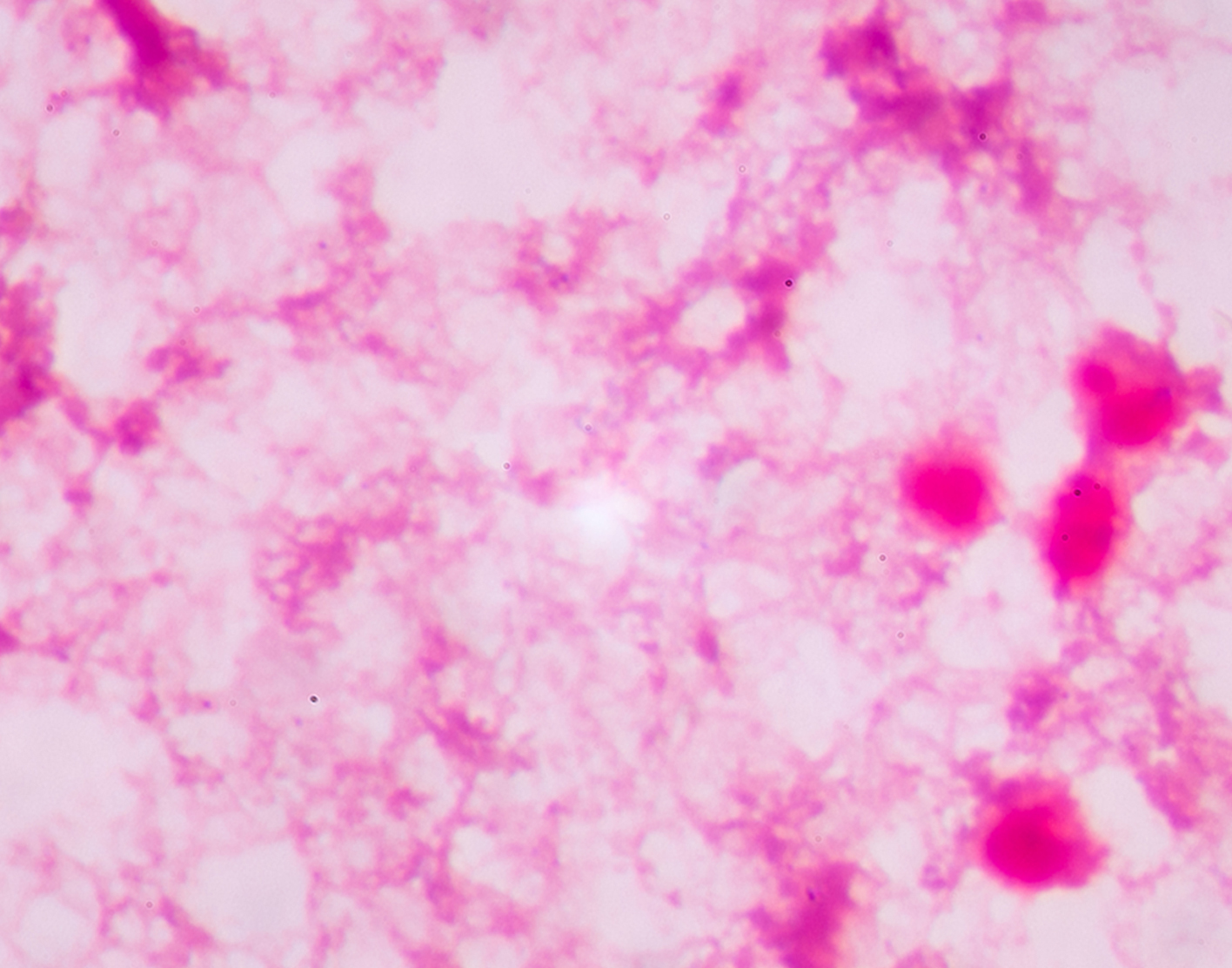
Pleural fluid Gram stain
Definition
The pleural fluid Gram stain is a test to diagnose bacterial infections in or around the lungs.
Alternative Names
Gram stain of pleural fluid
How the Test is Performed
A sample of the fluid can be removed for testing. This process is called
If bacteria are present, the color, number, and structure of the cells are used to identify the general type of bacteria. Full culture results will definitely identify the bacteria (this takes a few days). This test will be done if there is concern that a person has an infection involving the lung or the space outside the lung but inside the chest (pleural space).
How to Prepare for the Test
No special preparation is needed before the test. A chest x-ray or an ultrasound will probably be done before and after the test.
DO NOT cough, breathe deeply, or move during the test to avoid injury to the lung.
How the Test will Feel
You will feel a stinging sensation when the local anesthetic is injected. You may feel pain or pressure when the needle is inserted into the pleural space.
Tell your health care provider if you feel short of breath or have chest pain.
Why the Test is Performed
Normally, the lungs fill a person's chest with air. If fluid builds up in the space outside the lungs but inside the chest, it can cause many problems. Removing the fluid can relieve a person's breathing problems and help explain why the fluid built up there.
The test is performed when the provider suspects an infection of the pleural space, or when a
Normal Results
Normally, no bacteria are seen in the pleural fluid.
Normal value ranges may vary slightly among different laboratories. Some labs use different measurements or test different samples. Talk to your provider about the meaning of your specific test results.
What Abnormal Results Mean
You may have a bacterial infection in the lining of the lungs (pleura).
References
Martin GJ, Friedlander AM. Bacillus anthracis (Anthrax). In: Bennett JE, Dolin R, Blaser MJ, eds. Mandell, Douglas, and Bennett's Principles and Practice of Infectious Diseases. 9th ed. Philadelphia, PA: Elsevier; 2020:chap 207.
Millington TM, Finley DJ. Pleural effusion and empyema. In: Kellerman RD, Rakel DP, Heidelbaugh JJ, Lee EM, eds. Conn's Current Therapy 2023. Philadelphia, PA: Elsevier; 2023:930-932.
Review Date: 26/11/2022
The information provided herein should not be used during any medical emergency or for the diagnosis or treatment of any medical condition. A licensed physician should be consulted for diagnosis and treatment of any and all medical conditions. Call 911 for all medical emergencies. Links to other sites are provided for information only -- they do not constitute endorsements of those other sites. Copyright ©2019 A.D.A.M., Inc., as modified by University of California San Francisco. Any duplication or distribution of the information contained herein is strictly prohibited.
Information developed by A.D.A.M., Inc. regarding tests and test results may not directly correspond with information provided by UCSF Health. Please discuss with your doctor any questions or concerns you may have.



























